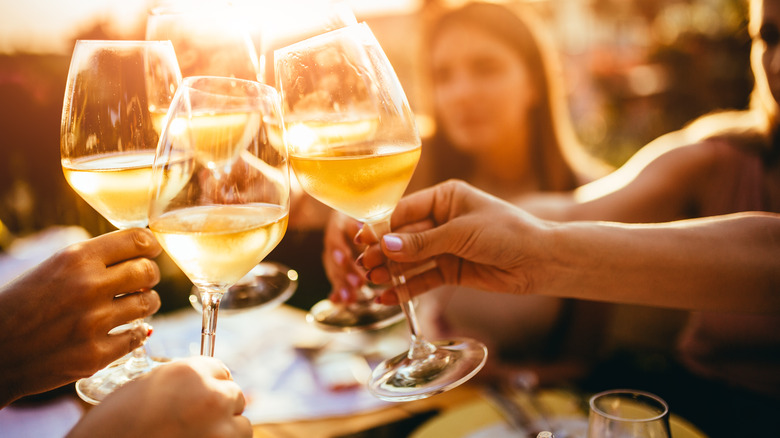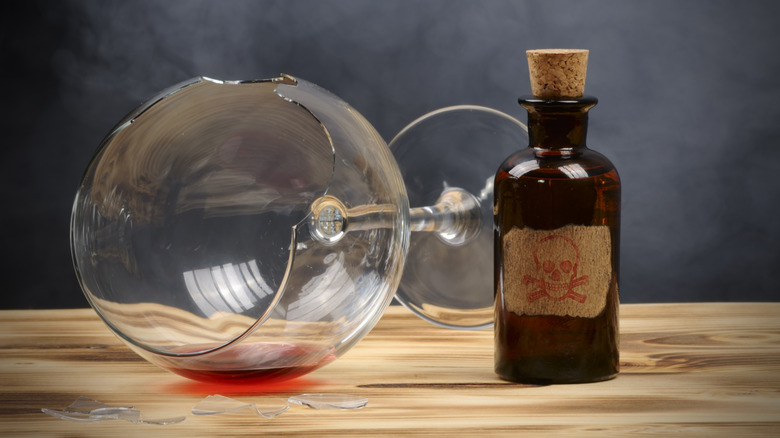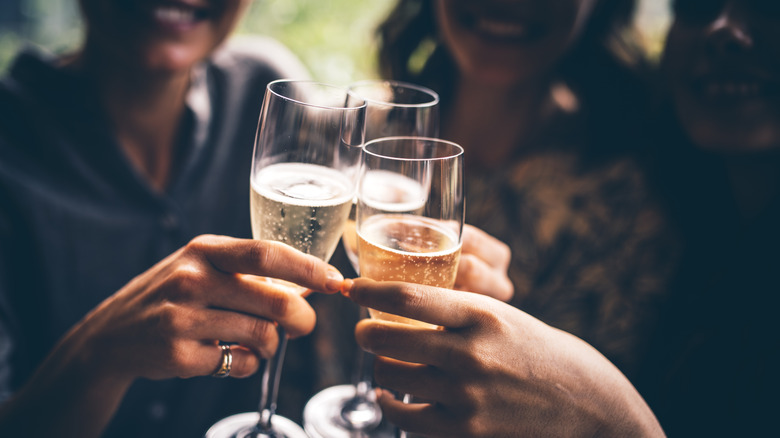Glass-Clinking Etiquette Started As Medieval Poison Control
Toasting while drinking is a tradition that exists across many cultures. Often, verbal toasts are uttered, although these vary according to the language spoken. "Cheers" is customary in English, of course. But there is another aspect of toasting etiquette that always seems to stay the same, regardless of language or culture: the touching, or clinking, of glasses.
This practice dates back at least to the Middle Ages, and its medieval origins are suggestive of a time much less trusting than our own. Poisoning was quite common during the medieval period. The Borgia family of Italy famously used arsenic-laced wine as a method to dispatch enemies, as well as to expand their wealth and political power. There's a reason, after all, that kings and queens have employed food tasters since antiquity.
This dark history is reflected in the act of toasting. The clinking of glasses, which could cause drops from each glass to spill into the other, served as both a way to show confidence in one's drinking companions and a method to ensure that any existing poison would be dispersed to everyone present. In some circumstances, medieval drinkers would pour a little wine into each other's glasses to ensure all were poison-free, or touch glasses if they were confident in the absence of poison.
The ancient connection between toasting and poison
Wine was a favored beverage for medieval poisonings, as its sediment helped to mask the flavors of poison. The frequency of these types of poisonings during the Middle Ages is believed to have led to the practice of clinking cups or glasses during toasts as a preventative measure — or at least, as an assurance of mutual poisoning. It's worth noting that not all medieval poisonings were nefarious in origin. Some were accidental, due to the widespread use of lead glazes at the time, particularly on pottery items like drinking cups. Unfortunately, clinking glasses did not guarantee protection against lead poisoning.
The association of poison with clinking glasses during toasts might date back much further than the Middle Ages. In his book "A History of the World in 6 Glasses," author Tom Standage traces the connection between the two to the invention of beer in Ancient Egypt and Mesopotamia. Standage argues that the absence of poison is implicit in the idea of shared drinks and suggests that the clinking of glasses originated from a communal memory of our distant past, when ancient humans drank beer from shared pots. Thus, the clinking symbolizes the consolidation of individual glasses into the original communal vessel.
Ancient Greece has also been cited as a possible origin for the tradition of clinking glasses, with the invention of toasting being linked to the prevention of poisoning.
Alternative theories for the clinking of glasses
Not all historical theories about the origin of glass-clinking attribute it to concerns about poison. One theory suggests that toasting in this manner engages all five senses. While the senses of sight, touch, smell, and taste are already involved in drinking, hearing is not. The clinking of glasses, therefore, brings the fifth sense into play. Another medieval theory posits that the noise made by clinking glasses served to ward off literal evil spirits that lurked inside of alcohol. Traditionally, bells were used for this purpose, but in a pinch, glass-clinking could suffice. The sounds were somewhat similar, and the act of clinking was likely to spill a little liquor, which was thought to appease any lingering malevolent spirits.
However, most histories of toasting do mention poison control as a primary factor in its invention. So the next time glasses are raised in unison, keep in mind what is really being celebrated: the comforting fact that no one is trying to kill you.



